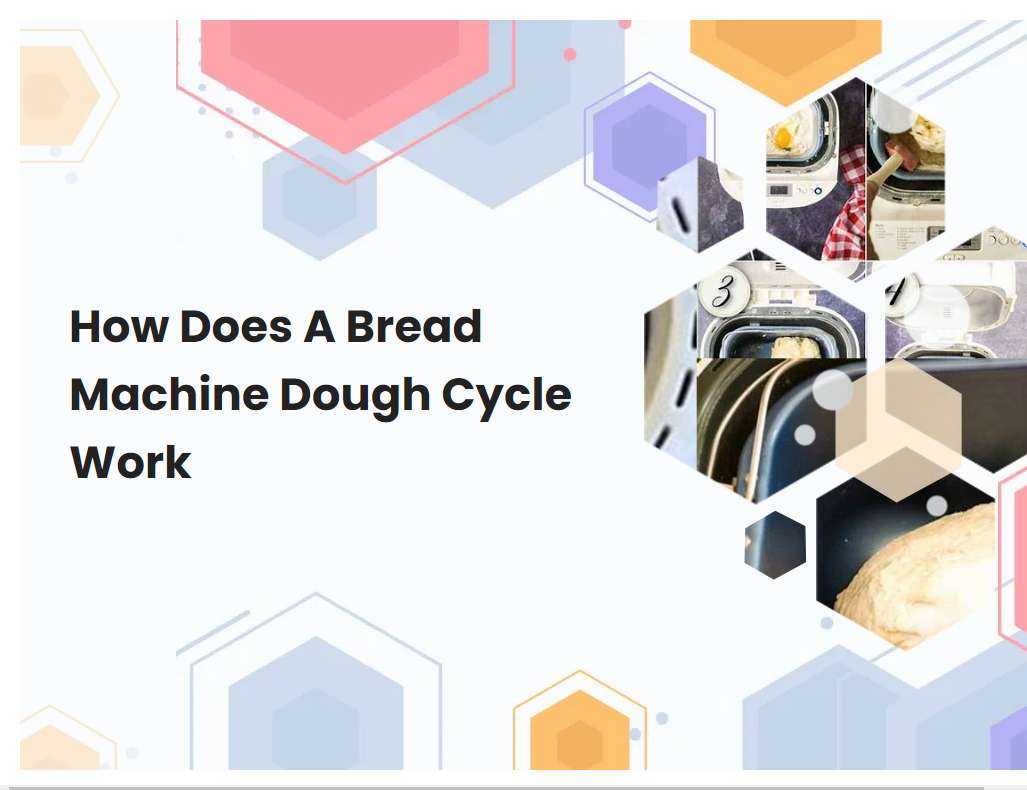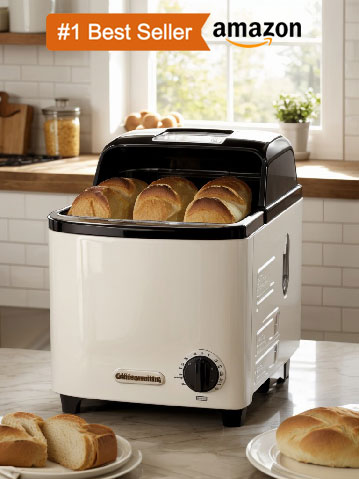How Does A Bread Machine Dough Cycle Work
A bread machine dough cycle is a great way for anyone to make homemade bread without the hassle of kneading, rising, and baking. This cycle takes all the guesswork out of the process and allows users to focus on creating delicious variations of bread. With a few simple ingredients, the bread machine will combine, knead, and rise the dough in order to make a finished product that is ready to be shaped and baked.

Read the instruction manual carefully before using the machine.
It is important to read the instruction manual of a machine before using it. The manual will explain how to use the machine safely and properly. It will also provide information about the parts of the machine, how to operate it, and any warnings or precautions that should be taken.
The manual may also include diagrams and illustrations to help with understanding how the machine works. Additionally, the manual may provide troubleshooting instructions and tips for maintenance. By reading the instruction manual, users can ensure they are using the machine correctly and safely.
Ensure that all ingredients are measured accurately.
Ensuring that all ingredients are measured accurately is an important part of any recipe. Accurate measurements will help ensure that your food turns out just as delicious as you intended it to be. Without accurate measurements, your food may not taste the way you expect it to.
To prevent this from happening, take the time to measure each ingredient carefully. Use measuring cups, spoons, or scales to measure out the exact amount of each ingredient that is required for the recipe. Make sure to read the recipe thoroughly and double-check your measurements before adding them to the dish. Taking the time to measure each ingredient accurately will ensure that your dish turns out perfectly every time!
See also: Fleischmann's Bread Machine Yeast Cinnamon Rolls
Place the ingredients into the bread machine in the order specified in the manual.
When making bread in a bread machine, it is important to ensure that the ingredients are placed into the bread machine in the correct order, as specified in the manual. Generally, the order of ingredients is liquid, dry, and yeast. To begin the process, pour the liquid ingredients into the bread pan.
This can include milk, eggs, butter, or oil. Next, add the dry ingredients such as flour, sugar, salt, and seasonings. Finally, sprinkle the yeast into the pan and close the bread machine lid. Once all of the ingredients are in the machine, select a cycle and press start. The bread machine will then mix, knead, rise, and bake the bread according to the cycle selected.
See also: Bread Machine Whole Wheat Hamburger Buns Potato Flakes
Select the Dough Cycle setting, and adjust time and temperature settings as desired.
The Dough Cycle setting on a bread machine is a great way to make dough for pizza, bread, and other baked goods. It allows you to mix and knead the ingredients to form a dough, then let the dough rise before baking. You can adjust the time and temperature settings to suit your needs.
For example, if you want a softer dough, you can set the time and temperature to a lower setting. If you prefer a firmer dough, you can increase the time and temperature. You can also adjust the settings to accommodate different types of dough, such as whole wheat or rye. The Dough Cycle setting is an easy and convenient way to make delicious dough for all your baking needs.
See also: Looking For Sourdough Bread Mix For Bread Machine
Check the dough's consistency after about 10 minutes of kneading.
After about 10 minutes of kneading, the dough should have a smooth, elastic consistency. It should no longer be sticky and should be slightly firm to the touch. If the dough feels too soft, it can be kneaded for a few more minutes.
If it feels too hard, it may be overworked and need to be rested before continuing. The surface of the dough should be glossy and it should spring back when pressed with a finger. The kneaded dough should also pass the windowpane test; that is, it should stretch thin enough to be translucent without breaking. If any of these criteria are not met, the dough may need to be adjusted or kneaded for longer.
See also: Sweet White Bread Machine All Purpose Flour
Add additional liquid or dry ingredients if necessary to achieve the desired dough consistency.
If the desired dough consistency is not achieved with the initial ingredients, additional liquid or dry ingredients can be added to get the desired result. Depending on the type of dough being prepared, additional liquid may be necessary to make the dough more pliable and easier to work with. For example, if the dough is too dry and crumbly, adding additional liquid such as water, milk, or buttermilk can help make it more malleable.
If the dough is too sticky, adding additional flour can help absorb some of the moisture and make it easier to handle. Additionally, adding a fat such as butter or shortening can help provide tenderness and flavor to the dough. In general, it is best to add only small amounts of additional ingredients at a time until the desired texture and consistency are achieved. With a little experimentation, anyone can make a delicious dough with the perfect texture and flavor.
See also: Williams Sonoma Gluten Free Bread Machine Mix
Allow the dough to rise in the machine for about an hour.
The dough should be allowed to rise in the machine for about an hour. This process is essential for the dough to develop flavor and texture. During this time, the yeast will feed on the sugar in the dough and release carbon dioxide, which will cause the dough to expand.
This will create a softer and fluffier dough that is easier to work with. The temperature and humidity of the machine will also affect the rising time, so make sure to check the manufacturer's instructions. Higher temperatures and humidities will result in faster rising times and vice versa. Allow the dough to double in size before taking it out of the machine and continuing with your recipe.
Remove the dough from the machine and shape as desired.
Once the dough is finished mixing in the machine, it should be removed from the machine and shaped as desired. Depending on what type of dish is being prepared, the dough may need to be stretched and rolled out, molded into a loaf, divided into sections for individual buns, or otherwise shaped as needed. To ensure that the dough remains pliable during this process, it may help to lightly dust the work surface with flour.
It's important not to overwork the dough, as this can cause it to become tough. After the desired shape has been achieved, the dough can be transferred to a greased baking sheet and placed in a preheated oven to finish the baking process.
Let the dough rise a second time before baking.
After the dough has been mixed and kneaded, the next step is to let it rise a second time. This step is important for creating a light, airy texture in the finished product. To do this, cover the dough with a damp cloth or plastic wrap and let it rise in a warm, draft-free place for about one to two hours.
During this time, the dough will double in size as the yeast activates and produces gas. This gas gets trapped in the gluten network of the dough and creates a light, airy texture. After the second rise is complete, the dough is ready for baking.
Preheat the oven, and then bake the dough according to the recipe instructions.
To begin, preheat the oven to the temperature specified in the recipe. While the oven is preheating, prepare the dough according to the recipe instructions. Once the dough is prepared, place it on a lightly greased baking sheet or in a greased baking pan.
Place the baking sheet or pan in the oven and bake the dough for the amount of time specified in the recipe. Keep an eye on the dough while it is baking to ensure that it doesn't get overcooked. Depending on the recipe, you may need to rotate or flip the dough halfway through baking. When the dough is done baking, remove it from the oven and let it cool before serving.





